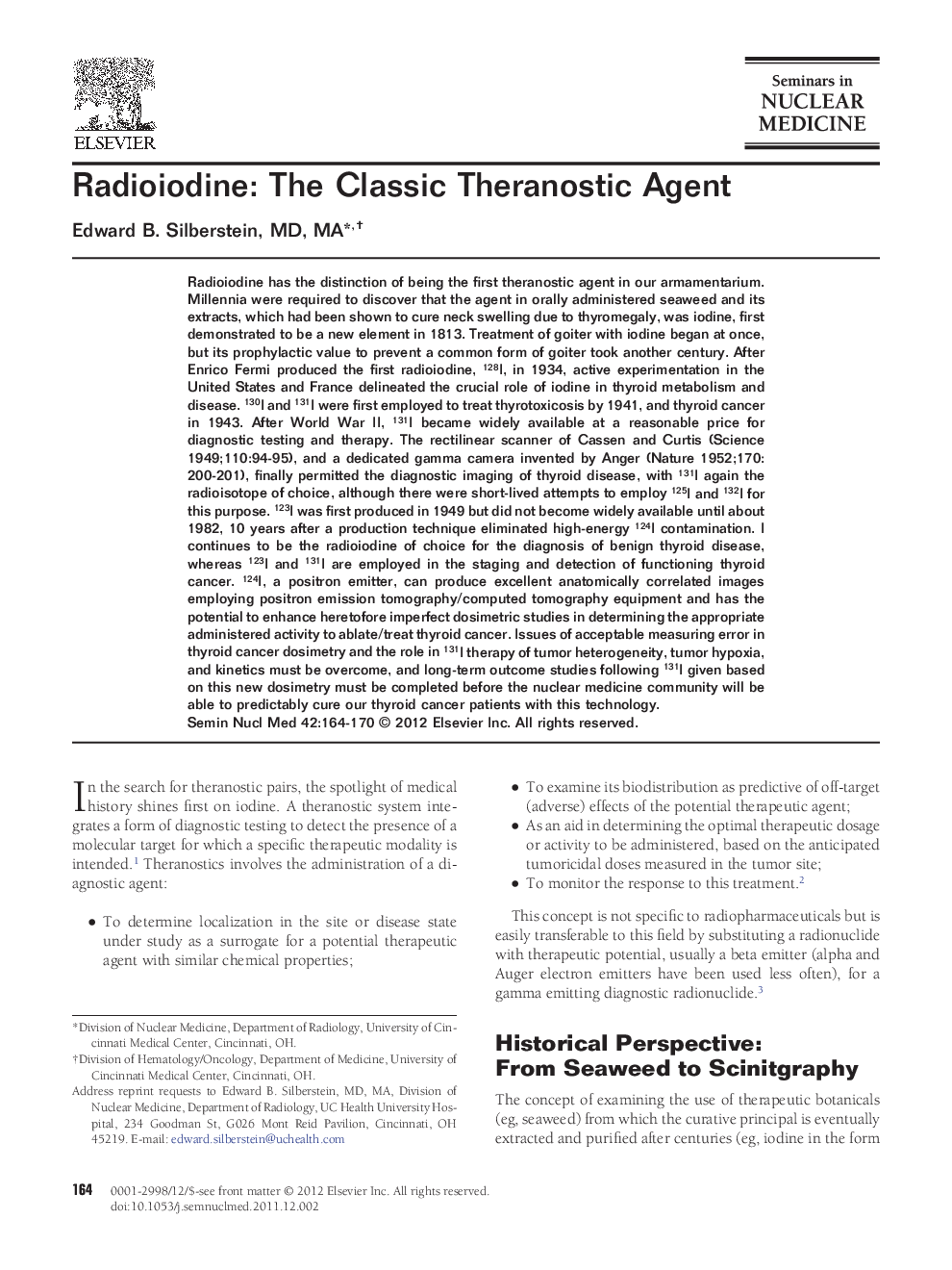| Article ID | Journal | Published Year | Pages | File Type |
|---|---|---|---|---|
| 4251243 | Seminars in Nuclear Medicine | 2012 | 7 Pages |
Radioiodine has the distinction of being the first theranostic agent in our armamentarium. Millennia were required to discover that the agent in orally administered seaweed and its extracts, which had been shown to cure neck swelling due to thyromegaly, was iodine, first demonstrated to be a new element in 1813. Treatment of goiter with iodine began at once, but its prophylactic value to prevent a common form of goiter took another century. After Enrico Fermi produced the first radioiodine, 128I, in 1934, active experimentation in the United States and France delineated the crucial role of iodine in thyroid metabolism and disease. 130I and 131I were first employed to treat thyrotoxicosis by 1941, and thyroid cancer in 1943. After World War II, 131I became widely available at a reasonable price for diagnostic testing and therapy. The rectilinear scanner of Cassen and Curtis (Science 1949;110:94-95), and a dedicated gamma camera invented by Anger (Nature 1952;170:200-201), finally permitted the diagnostic imaging of thyroid disease, with 131I again the radioisotope of choice, although there were short-lived attempts to employ 125I and 132I for this purpose. 123I was first produced in 1949 but did not become widely available until about 1982, 10 years after a production technique eliminated high-energy 124I contamination. I continues to be the radioiodine of choice for the diagnosis of benign thyroid disease, whereas 123I and 131I are employed in the staging and detection of functioning thyroid cancer. 124I, a positron emitter, can produce excellent anatomically correlated images employing positron emission tomography/computed tomography equipment and has the potential to enhance heretofore imperfect dosimetric studies in determining the appropriate administered activity to ablate/treat thyroid cancer. Issues of acceptable measuring error in thyroid cancer dosimetry and the role in 131I therapy of tumor heterogeneity, tumor hypoxia, and kinetics must be overcome, and long-term outcome studies following 131I given based on this new dosimetry must be completed before the nuclear medicine community will be able to predictably cure our thyroid cancer patients with this technology.
